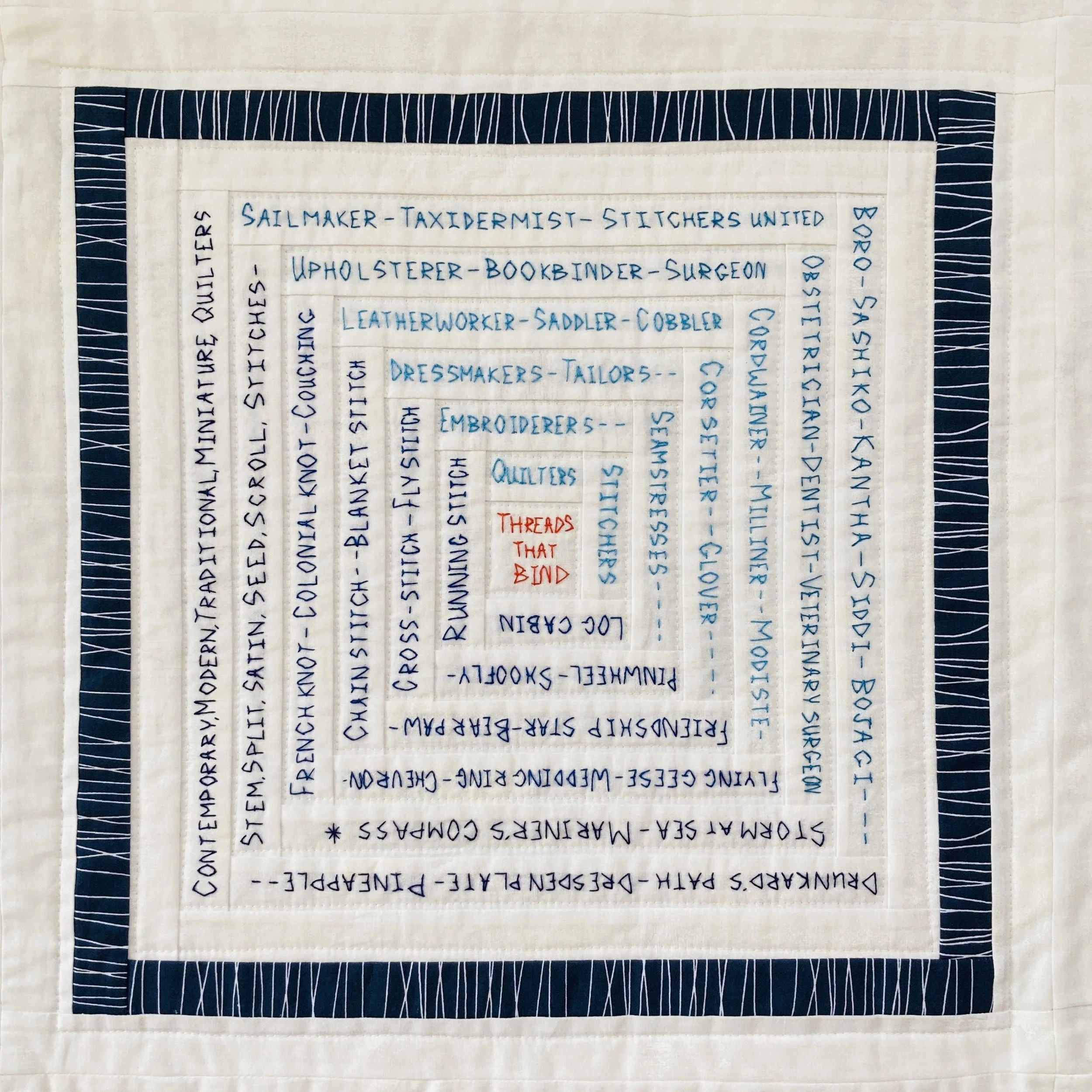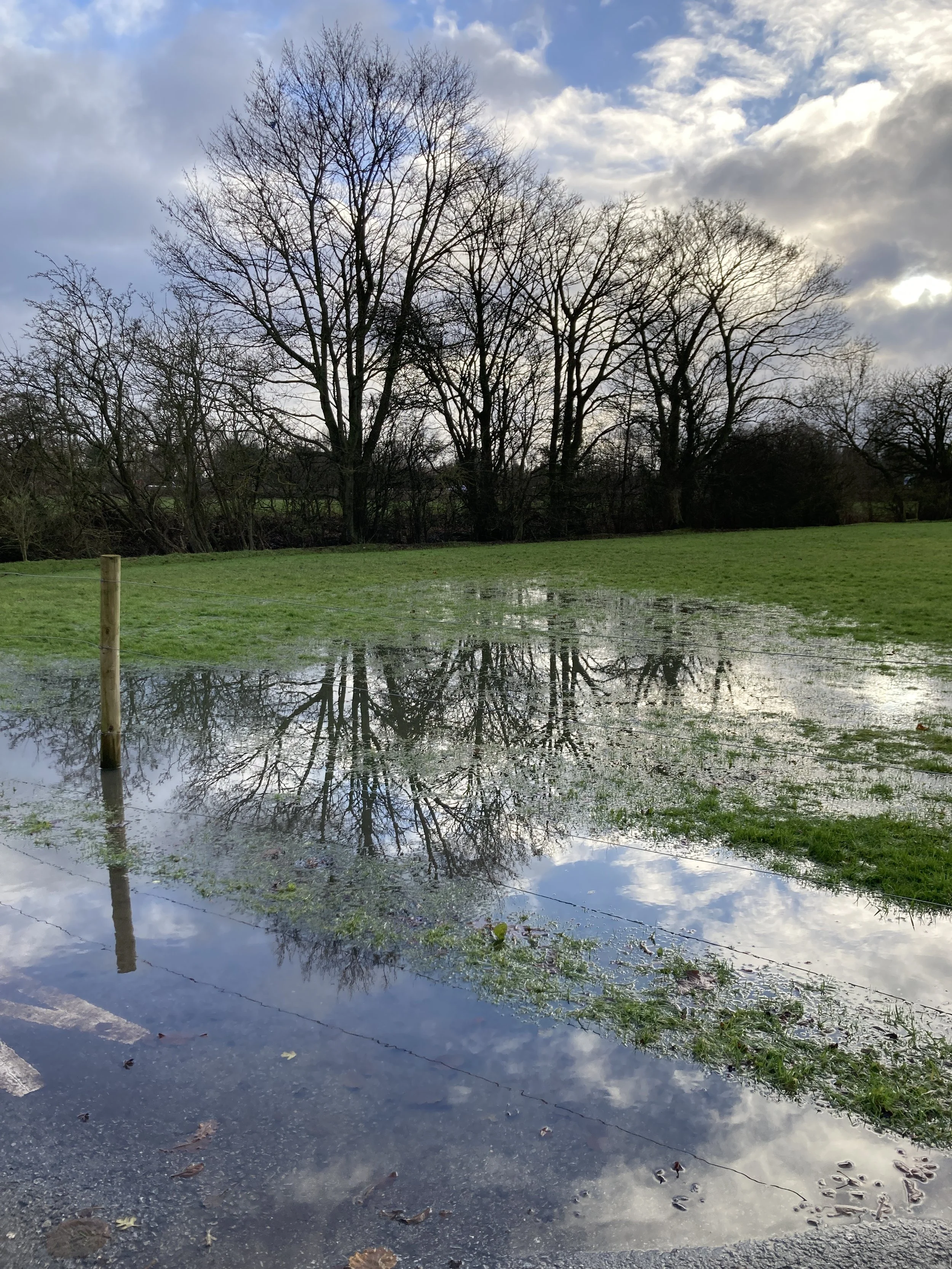Activism and the Arts
Last year I entered a quit for Festival of Quilts, which was a response to the tenth anniversary of the Rana Plaza Factory collapse (which I wrote about in an earlier blog post). No one should die was entered into the Sustainable Quilts category.
It was constructed from discarded denim jeans, the backing from an indigo-dyed discarded cotton sheet. The appliqué lettering used fabric from corduroy trousers and tailors’ samples. An observation from someone about that quilt suggested that I was already known for making political statements in my work. I have always wanted to work as sustainably as possible and as time goes on I realise that while I might make quilts for hugs, I also want to raise awareness of social justice issues in my quilting as I do in the rest of my life
But can art change the world (or at least one viewer’s mind a little)? I’ve been thinking about this for some time. In 2022 I visited Radical Acts: Why Craft Matters, an exhibition at Harewood House near Leeds. I wrote about this at that time. Recently I have been reading, and listening to, a range of works that address the issue of art and politics, here I reflect on some of those.
“How does politics sit in art without it feeling finger waggy?”, asked playwright Lucy Prebble on This Cultural Life Radio4 on 2nd October 2023 (‘This Cultural Life’, 2023). Prebble was explaining why Waiting for the great leap forward by Billy Bragg is a song she keeps coming back to when she is writing political works, and needs to remind herself of why she has chosen this topic; it helps provide a moral compass. This is an important question for me – how to send a message without appearing to preach, but make people think about an issue they may not have considered, or maybe encourage them to act on something they have been thinking about already.
Funny Weather Art in an Emergency is a collection of essays by Olivia Laing who writes about art and culture and how they interact with politics. She covers a wide range of artists, writers, and musicians, I am heartened by her introduction to the collection:
We're so often told that art can't really change anything. But I think it can. It shapes our ethical landscapes; it opens us to the interior lives of others. It is a training ground for possibility. It makes plain inequalities, and it offers other ways of living. (Laing, 2021, p. 8)
in Many Hands Make a Quilt: Short histories of radical quilting Jess Bailey describes the activism that can take place when community groups create art. A prime example of this is ‘the largest community project anywhere’, that resulted in the National Aids Memorial Quilt (Bailey, 2021). This quilt was inspired by a patchwork of placards displaying the names of friends who had died of AIDS. The quilt is made of panels memorialising those who have died from AIDS. In 1987, at its first showing it was made of 1920 panels, but it didn’t stop there, people continue to create panels, there are now nearly 50,000 panels, and ‘it continues to be an act of activism to demand health and social justice’ (National Aids Memorial, no date).
My current project arises out of rage – but can rage lead to something positive? In Hope in the Dark, Untold Histories, Wild possibilities Rebecca Solnit makes the case that we can only have hope if we are prepared to act to make what we hope for happen. And we have to be prepared for change to be slow, not expecting instant results. I have taken two suggestions from her advice to activists to guide my current work:
making an injury visible and public is often the first step in remedying it (p xvi)
To be effective, activists have to make strong, simple, urgent demands, at least some of the time – the kind of demands that fit on stickers and placards, the kind that can be shouted in the street by a thousand people. (p17)
References
Bailey, J. (2021) Many Hands Make a Quilt: Short histories of radical quilting. Norwich: Common Threads Press.
Laing, O. (2021) Funny Weather Art in an Emergency. London: Picador.
Mesch, C. (2014) Art and politics: A small history of art for social change since 1945. Bloomsbury Publishing.
Solnit, R. (2016) Hope in the dark: Untold histories, wild possibilities. Haymarket Books.













